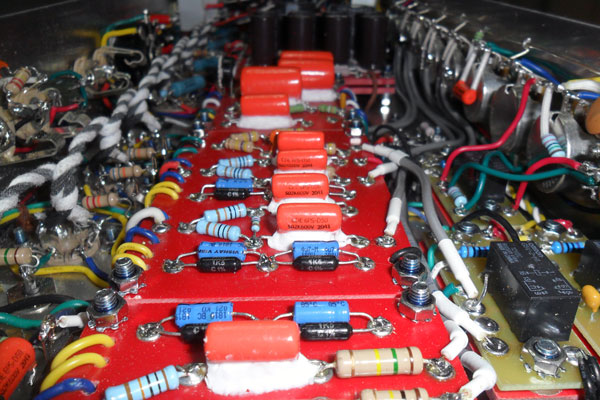
Hand Wired
Meticulously selected audio grade through-hole components mounted on especially designed eyelet boards ensure easy maintenance and modification. Observing “circuit constants”, every board is a “one-off”, unique to the amp.

The Skyliner, Low Plate Custom Reverb, represents an amalgamation of several D-style amps brought together in over two years of development to arrive at the design you see before you now. The “low plate” in Low Plate Custom Reverb, is an homage to Dumble’s transitional amps from the early ’80s. Just like those amps, the clean tone is bright without being harsh, silky smooth and especially suits single coil Strats and Teles. The FET boost is a higher impedance input with an almost flat frequency response which can help boost the signal from low-output pickups, but which inventive players will want to try alongside other signal stages in the amp.
The cascading overdrive channel couples beautifully with the quartet of 6L6s in the power section with plenty of low-end punch without becoming over saturated. The secret to dialling this amp in is to approach the overdrive slowly. When you crank it, you will be reminded that you have internal organs, but when you find the sweet spot of transparency between the clean and overdrive, the organic and rich overdrive is well-mannered and tight. The response remains articulate and impressively touch-sensitive over the broad spectrum of sonic possibilities. For extra punch, engage the PAB, a preamp boost which bypasses the tone stack increasing the gain, allowing your solos to take flight.
The reverb sits at the tail of the preamp chain, just before the effects loop, meaning all of that vivid tone shaping in the clean and overdrive channels is unattenuated before it hits the reverb driver. What goes in, is what you get out but with the added shimmering analogue intensity provided by the dual-spring, long decay reverb tank. If, on the other hand you are looking to exploit the various expressive possibilities of a reverb pedal, you can always bypass the onboard reverb and send the signal through the tube buffered effects loop instead. Perfect for time-based effects, the loop sits just before the power section. Again, this means all the tone shaping from the preamp is complete and unattenuated before it reaches the reverb and effects loop stages.
A complete tone machine. Paired with an EVM 12L speaker at higher volumes you will easily cut through the mix on a gig night.

Meticulously selected audio grade through-hole components mounted on especially designed eyelet boards ensure easy maintenance and modification. Observing “circuit constants”, every board is a “one-off”, unique to the amp.
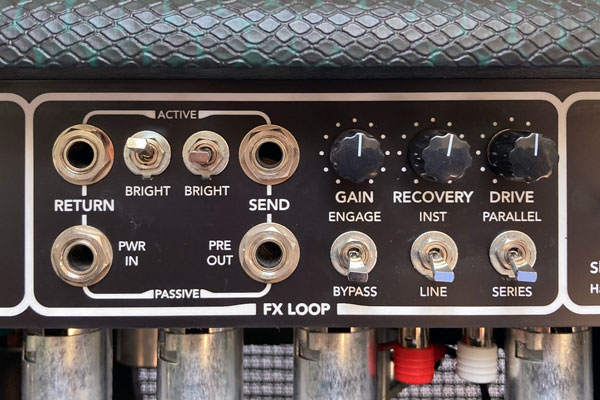
Fully integrated tube driven effects loop for time-based effects in series or parallel and zero loss of tone. Preamp out and power amp in jacks allow for connection directly to a mixing desk. Can also be used as an attenuator.
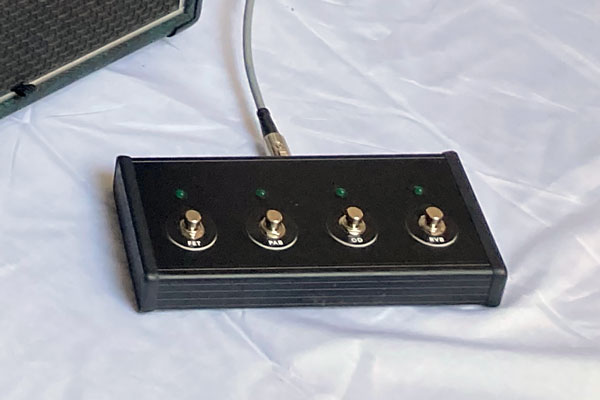
The custom-made, LED illuminated 4 button footswitch comes in a robust aluminium case with its own dedicated five-metre cable. Engage the FET boost (FET), preamp boost (PAB), reverb (RVB), and overdrive (OD) on the fly.
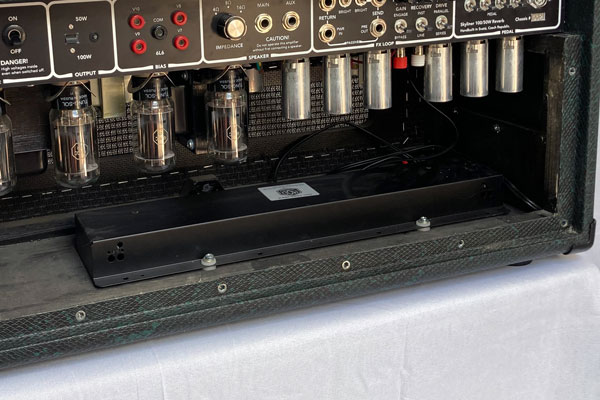
Lush and toneful with an almost organic depth and intensity which is difficult to achieve with digital processing. This long dual-spring, long decay reverb pan offers everything from a roomy shimmering ambience to full-on Dick Dale.
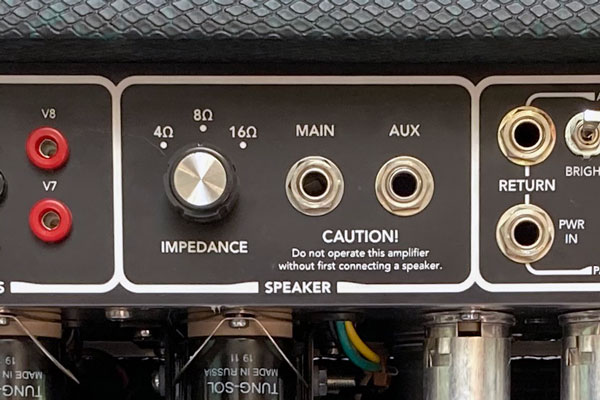
The multi-tap M6 laminated output transformer allows you to drive a variety of speaker cabs thanks to the 4 Ohm / 8 Ohm / 16 Ohm switch. You just have to run the math for multi-speaker series or parallel setups. Easy.
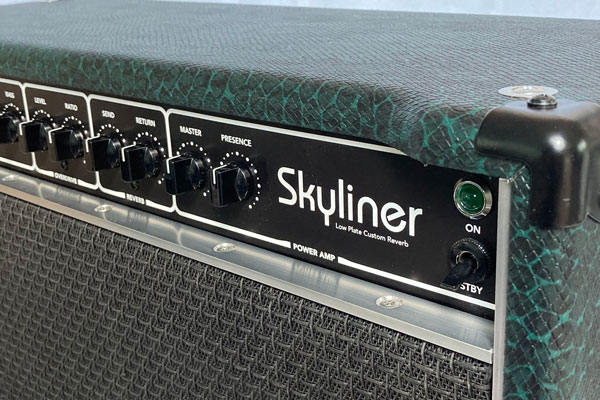
There is much to admire with the use of high-quality detailing including solid aluminium bar trim. Green snakeskin is a personal favourite but there is a plethora of styles to choose from. No guarantees that if it is finished in red, it will play faster.
This list outlines the typical specifications for this model and may be adapted to suit your particular needs. To find out more and discuss the possibilities I can realise for you, please contact me directly.
POWER |
||
|---|---|---|
| Mains power: | 230V / 50Hz | |
| Output power: | 50 Watts / 100 Watts (switchable) | |
| Tubes: | x2 – 7025 (Clean and Overdrive preamp) | |
| x1 – ECC81 (Reverb) | ||
| x1 – ECC83 (Reverb) | ||
| x1 – ECC83 (FX loop) | ||
| x1 – ECC83 (Phase inverter) | ||
| x4 – EL34 (Power tubes) | ||
| Channels: | Clean | |
| Overdrive | ||
| Preamp Boost | ||
| FET boost | ||
| FX Loop (active): | Series / Parallel | |
| FX Loop (passive): | Series | FRONT PANEL |
| FET LEVEL control | ||
| VOLUME control | ||
| EQ controls: | TREBLE | |
| MID | ||
| BASS | ||
| EQ Switches: | BRIGHT (three positions: High / Medium / Low) | |
| MID | ||
| ROCK / JAZZ | ||
| Overdrive controls: | LEVEL | |
| RATIO | ||
| Reverb controls: | SEND | |
| RETURN | ||
| Power amp controls: | MASTER | |
| PRESENCE | ||
| STANDBY switch | REAR PANEL |
|
| 230V, IEC mains female socket | ||
| Power switch | ||
| 50 Watt / 100 Watt selector switch | ||
| External bias ports: V7-V10, COM (4mm) | ||
| Impedance selector (4 Ohm / 8 Ohm / 16 Ohm) | ||
| MAIN and AUX speaker female jacks (6.3mm) | ||
| Footswitch manual override FET, PAB and OD switches | ||
| 6 pin DIN female jack for footswitch | EFFECTS LOOP |
|
| Passive loop: | PRE-OUT (send) and PWR-IN (return) female jacks (6.3mm) | |
| Active loop: | SEND and RETURN female jacks (6.3mm) | |
| Controls: | DRIVE | |
| RECOVERY (MIX) | ||
| GAIN | ||
| Switches: | ENGAGE / BYPASS | |
| PARALLEL / SERIES | ||
| INST. / LINE | ||
| BRIGHT (SEND) / BRIGHT (RETURN) | HEAD INTERIOR |
|
| Reverb jacks: | Send and Return jacks (RCA connectors) - chassis bottom | |
| Reverb pan: | Mod ® 4AB3C1B, Long Decay, 2-Spring - floor of head | ACCESSORIES |
| 4 button LED illuminated footswitch for FET, PAB, RVB and OD operation supplied with 5m cable | ||
| 3m, IEC C13 power cable | MEASUREMENTS |
|
| Height: | 288mm | |
| Width: | 630mm | |
| Depth: | 257mm | |
| Weight: | 20.8 kilos | |
A fully featured FX loop, really two-in-one, partly inspired by the “Dumbleator” rack unit designed by Alexander Dumble. Modifications to the basic cathode follower design feature: a parallel, passive loop; a lower output impedance drive stage; selectable line and instrument levels; a linear Mix control for parallel side-chaining; a pair of Bright switches for recovering high-end losses when using longer, higher capacitance cables to your effects pedals. The added Bypass/Engage switch allows you to bypass the loop circuits entirely.
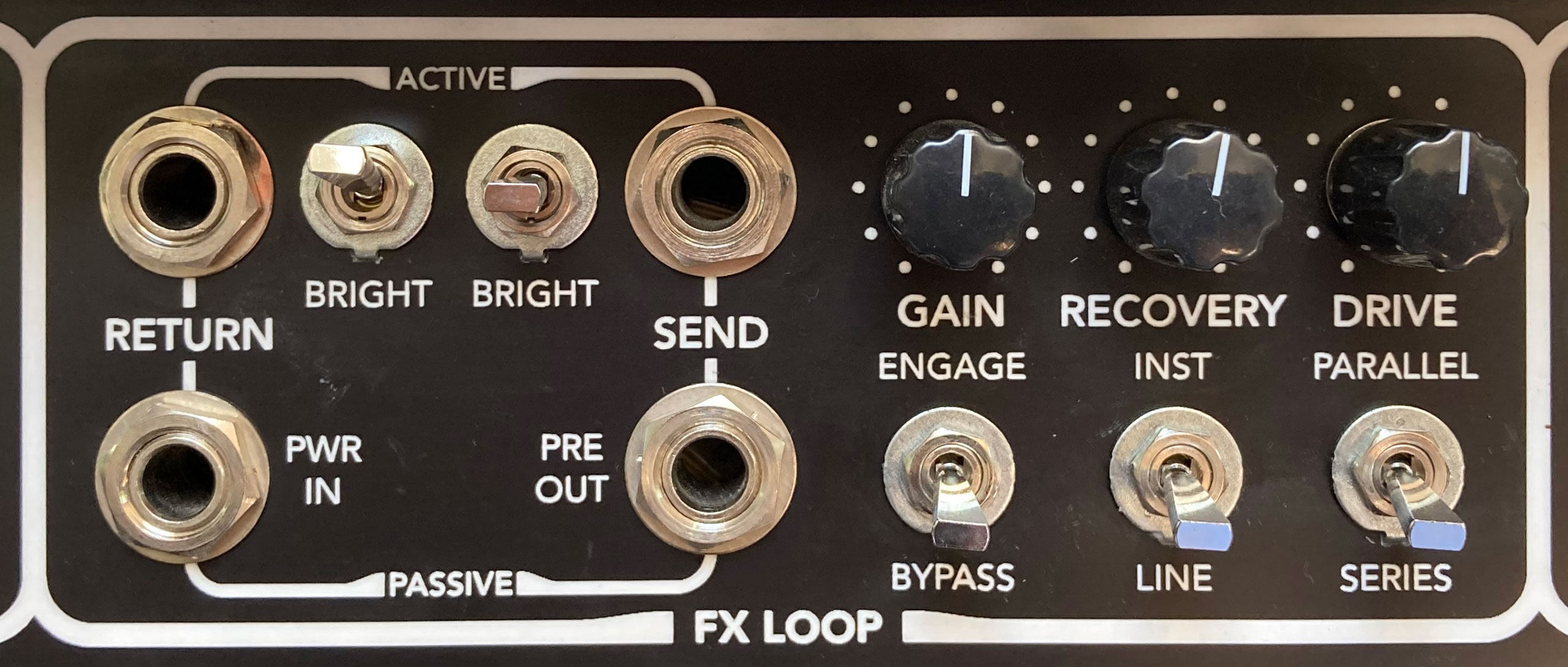
The lower impedance modifications to the drive-side of the circuit ensures that time-based effects pedals receive a signal with a very low sound floor. The cathode follower is non-inverting, so all things being equal, the tone remains rich and full. Tube buffered effects loops are not typically “zero loss” but the fully integrated design of this loop means that if the Drive and Gain controls were set to unity gain, you wouldn’t know it was engaged if you hadn’t set the Bypass / Engage switch yourself. The Gain control can also be used to trim the signal level, (even without any jacks being plugged in) boosting or attenuating it. A handy little exploit if you want to drive the front end of the amp without waking the dead.
The Recovery (a.k.a. Mix) control can also be used to trim the level when the loop is in series mode but comes into its own when the loop is used in parallel for side-chaining effects with a remarkably linear interplay between the wet and dry signals. In the parallel dry / wet balance you get an even output level without any hump or scoop across the dial.
This send and return signal is unbuffered and the PRE-OUT (send) jack is fed by the signal from the preamp and Master pot and the PWR-IN (return) jack is the return path for the signal directly onward to the phase inverter and the power section. This series, line level loop offers optimum signal and directly bypasses the cathode follower: straight out from the preamp, straight back into the power amp. The Master volume on the front of the amp controls the signal sent to PRE-OUT jack but further trimming can be achieved by hooking up a volume / expression pedal here. Inserting jacks in the passive SEND and RETURN ports disengages the active loop circuit.